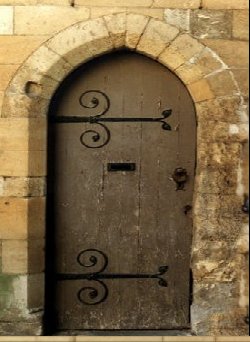|
|
|
|
Doors to the Past |
|
BarboursvilleOur farmers came mostly from Virginia and Pennsylvania. Schools were good for those times and were well attended. Boys and girls came to school from all over the county, as nearly everybody had a horse, or in winter they could board in town at $1.50 to $2.00 per week. The first teacher I have any record of was David McGinnis, who taught here in about 1840. He was one of the first Marshall College students, and was studying for the ministry. The teachers, as I remember them, were Mr. Simpson, Edward Vertegan and wife, Joseph Foster and wife, Miss Fannie Chapman, Jared Armstrong, Mr. McClelland, Dr. V. R. Moss, James Thornburg, B. H. Thackston. All taught private schools before the Civil War. Tuition was $1.00, $1.50 to $2.00 per month. If it were possible to trace the boys who attended these schools, it would undoubtedly be found that their education compared with the best. Barboursville was surrounded by an agricultural section, producing large crops of grain, fat hogs, sheep, and cattle. Hogs constituted the "cash crop". They were butchered and packed in Barboursville. Hams and lard went to Pittsburgh or Philadelphia; side meat and shoulders to the salt works in Kanawha. Hogs were as fine as we have today, and were much cheaper to raise on mash, and finished with corn. Wagons came from North Carolina, loaded with apple brandy. They sold it here, and loaded back with bacon and salt. It would no doubt create much consternation to hear a boat whistle here in Barboursville, for the gate to open at the locks, so the steamboat could pass through. Then the polite clerk, in the old days, went down, assisting the ladies and children ashore, followed by the colored porter with the baggage. Yes, we saw just that sixty-five years ago. For Guyandotte River was locked and dammed by the New York Navigation Company as far as Branchland. Seven locks were put in at great expense, in order that the company might ship coal out. This was the beginning of coal development in the Guyandotte Valley. These locks and dams had no keepers during the Civil War, and so were ruined by floods, and were eventually taken out by the Government. My father, W. C. Miller, built two of these locks by contract, one just above the mouth of Mud River, and one at Branchland. His foreman, Billingly Stafford, was drowned during this work, and was buried in our old cemetery. ( 2 )
|
